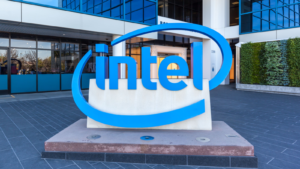
The Dow Jones Industrial Average is an index comprised of 30 blue-chip stocks. Taken together, the Dow is supposed to be representative of the U.S. economy. So far in 2024, the Dow is up 5%. That brings its 12-month performance to a gain of 23%.
While impressive, the Dow’s performance has trailed that of the technology-laden Nasdaq exchange and the benchmark S&P 500 index. The trailing performance is due, in large part, to the fact that a third of the Dow stock components are in the red so far in 2024. Currently, 11 of the 30 stocks listed on the Dow have declined on the year. In many cases, the declines present a buying opportunity for investors. It’s possible to buy shares of some great blue-chip stocks on sale. Stocks of well-known companies that have proven to be long-term winners are now available at discounted prices. While some patience might be required on the part of investors, in time many of the lagging Dow components are likely to recover and rally. Here are three Dow stocks to buy at a 52-week low in March.
Dow Stocks to Buy: Boeing Co. (BA)

The worst performing stock in the Dow so far in 2024 is Boeing Co. (NYSE:BA). Year-to-date (YTD), the aircraft manufacturer’s stock is down 25% versus a 5% gain for the index as a whole. BA stock has been sinking and is close to its 52-week low on continued safety issues with its aircraft, and ongoing regulatory investigations into the company. The decline this year has Boeing’s stock now trading 50% lower than where it was five years ago.
The latest bad news to hit Boeing and its share price is that the U.S. Justice Department has opened a criminal investigation into the January incident that saw a door-sized hole blow open on a Boeing made aircraft midflight. In recent weeks, other Boeing aircraft were found to have missing parts and extra inspections continue to be carried out on the company’s airplanes. Shareholders are now calling for CEO Dave Calhoun to be removed.
So why is BA on this list of Dow stocks to buy? The current situation at Boeing is concerning. However, investors should keep in mind that the company continues to be one of only two commercial aircraft manufacturers in the world, and it is working overtime to fix the problems, spurred on by regulators who are overseeing its every move.
Nike (NKE)

The latest earnings print from Nike (NYSE:NKE) did nothing to help the company’s share price. NKE stock fell 7% after the company delivered its latest financial results and forward guidance. YTD, Nike’s share price is down 12%, making it the second worst performing stock in the Dow. The company’s stock is now trading below $100 a share and near its 52-week low.
While Nike’s fourth quarter 2023 results beat Wall Street expectations, the stock sank on news that the company’s sales continue to slow in China, and on a disappointing outlook. Nike reiterated its sales outlook for fiscal 2024 and said that it expects revenue to grow by only about 1% for all of this year. For the current first quarter, Nike said it expects sales to be up only slightly compared to Wall Street estimates that called for 2% growth.
While the latest earnings were disappointing, its important to remember that Nike’s results continue to beat Wall Street forecasts, it remains the world’s largest athletic apparel retailer, and it is a top sports brand globally.
Intel (INTC)

The third worst performer in the Dow this year is chipmaker Intel (NASDAQ:INTC). While the overall microchip and semiconductor sector is soaring right now, fueled by hype around artificial intelligence (AI), INTC stock has been slumping. So far in 2024, Intel’s share price is down 11%. That brings its five-year decline to 20%. By any measure, Intel’s stock has been a chronic underperformer.
However, there is hope for INTC stock. The company just announced that it has received $8.50 billion from the U.S. government through the Chips and Science Act. Intel said the government funding will support the creation of chip factories in Arizona, New Mexico, Ohio, and Oregon. The company also expects to receive federal loans of up to $11 billion and a tax credit benefit on up to 25% of more than $100 billion in qualified investments.
The new government funding will help Intel in its long-term goal of pivoting from being a designer of microchips and semiconductors to a manufacturer of the technology.
On the date of publication, Joel Baglole did not have (either directly or indirectly) any positions in the securities mentioned in this article. The opinions expressed in this article are those of the writer, subject to the InvestorPlace.com Publishing Guidelines.






